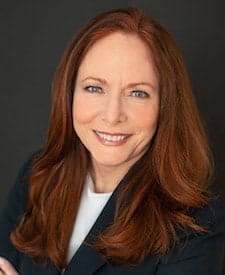By Pamela J. Gallagher
For organizations and their leaders, the past year has been one of upheaval, intense challenges, and new opportunities. The word resilience has been on the tip of every leader’s tongue and the subject of many articles. The leadership of organizations that have been able to rapidly and repeatedly adapt or pivot as the world changed demonstrated that resiliency is the key to success.
Resilience is “one of the great puzzles of human nature,” as Diane Coutu reflects in her 2002 article in Harvard Business Review. How is it that some are crushed by seemingly impossible circumstances, while others rise to the occasion and thrive? As I have reflected on this question as our society begins to reach a post-pandemic equilibrium, there are two principles that stand out to me as key pieces to the resiliency puzzle.
Make the best use of available resources.
A key trait of resilient leaders is the ability to make the best use of available resources. In unprecedented situations, this requires an understanding of the resources as they have historically been utilized and a willingness to learn and accept new directions for resources.
The term bricolage is a helpful way to describe this concept. The root of the word means “to bounce back.” As defined in the Harvard Business Review article mentioned above, bricolage in the modern sense is “a kind of inventiveness, an ability to improvise a solution to a problem without proper or obvious tools or materials.” Leaders who are adept in this skill make the most of what they have, always tinkering with familiar assets and finding innovative uses for them.
Perhaps the most essential resource that leaders have had to re-imagine and re-purpose in this pandemic year has been the expertise and knowledge around their tables. Organizations that already had cultivated a culture of empowering their staff to explore new ideas and expand their skill set thrived during the COVID-19 crisis as employees took on new roles and came up with new solutions for the problems they needed to solve.
Redefine organizational focus and objectives.
Resilient leaders across industries had to pivot quickly to keep their organizations afloat when the pandemic began. They were challenged to change focus and direction without losing their sense of their underlying mission and vision.
While restaurant owners were transitioning to delivery and curbside services and teachers were finding ways to engage their students online, healthcare leaders were grappling with how to quickly find a way to treat patients with COVID, while continuing to safely treat those with other medical needs. Leaders had to deviate from objectives focused on market share or revenue and prepare for unknown and undefined events.
While the constraints for change in health care are often restricted by regulations and the ultimate “product” of protecting and improving human health, many healthcare leaders took the initiative to find a way forward during these arduous times—showing the utmost resiliency. This will serve them and their organizations well as we continue to adapt to providing care in the (hopefully) waning weeks of the pandemic.
About Pamela J. Gallagher
Pamela J. Gallagher is a senior healthcare finance executive with 20 years of experience balancing the reality of finance with the delivery of excellent patient care. As a consultant she instills financial discipline, streamlines processes to maximize revenue, and reduces expenses for immediate improvements and long-term results. She writes on healthcare, finance, and technology at gallaghersresulting.com.
Resources
How Resilience Works, Harvard Business Review
Agile resilience: Lessons from COVID-19, McKinsey
How to boost resilience during coronavirus, Fast Company
Entrepreneurship in the Era of COVID-19, Texas A&M University, Mays Business School
How Restaurants Are Innovating During the COVID-19 Pandemic, Forbes
The Editorial Team at Healthcare Business Today is made up of skilled healthcare writers and experts, led by our managing editor, Daniel Casciato, who has over 25 years of experience in healthcare writing. Since 1998, we have produced compelling and informative content for numerous publications, establishing ourselves as a trusted resource for health and wellness information. We offer readers access to fresh health, medicine, science, and technology developments and the latest in patient news, emphasizing how these developments affect our lives.








